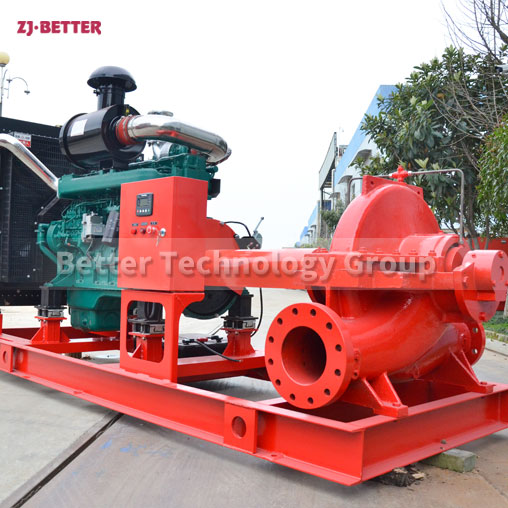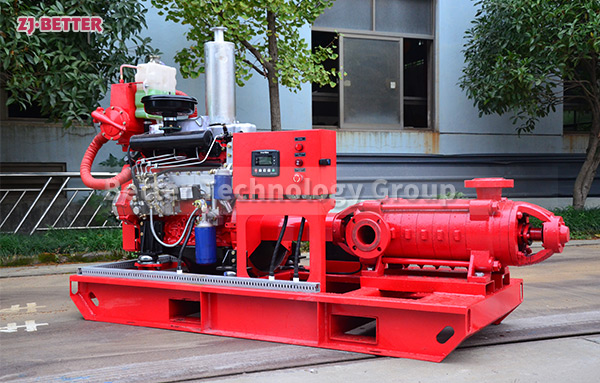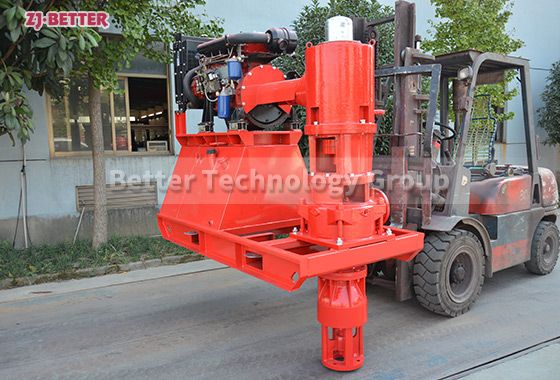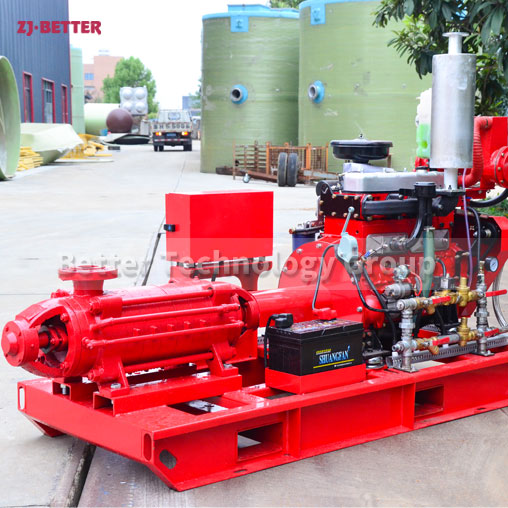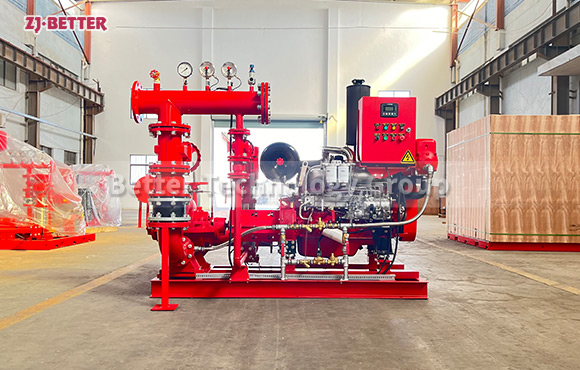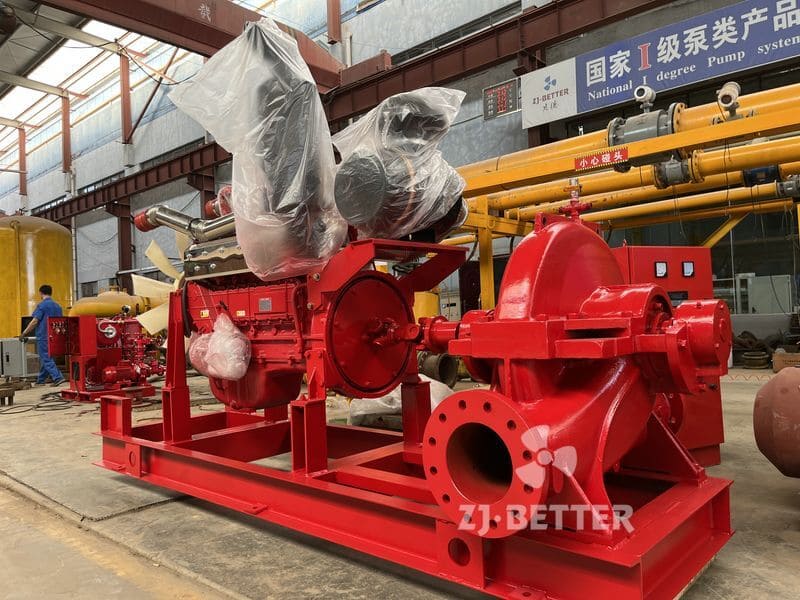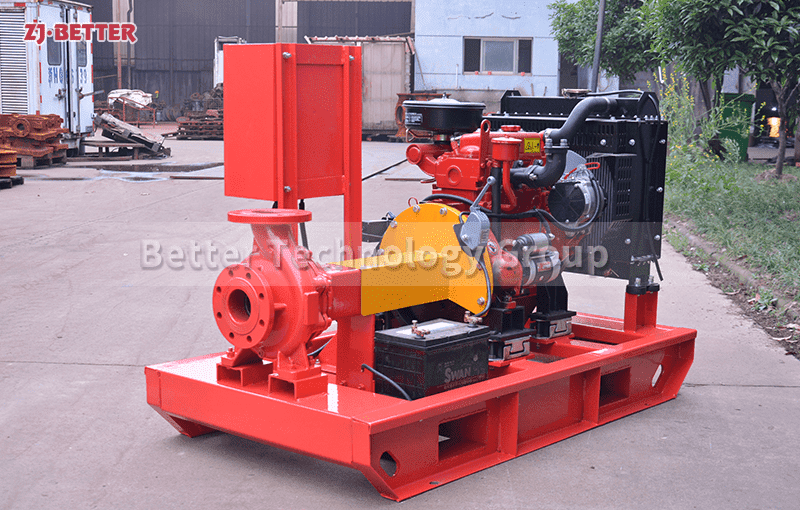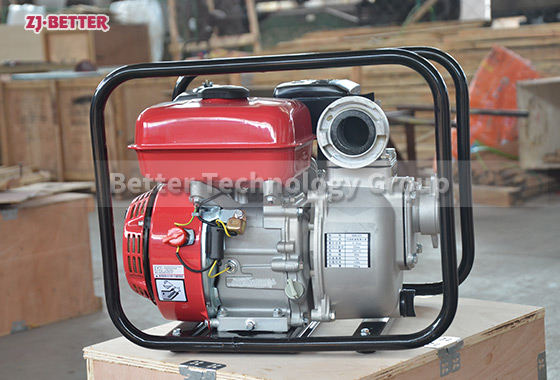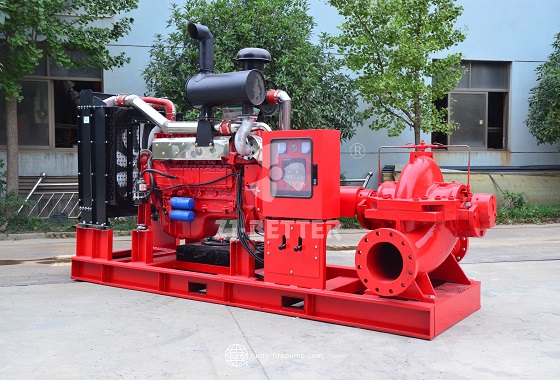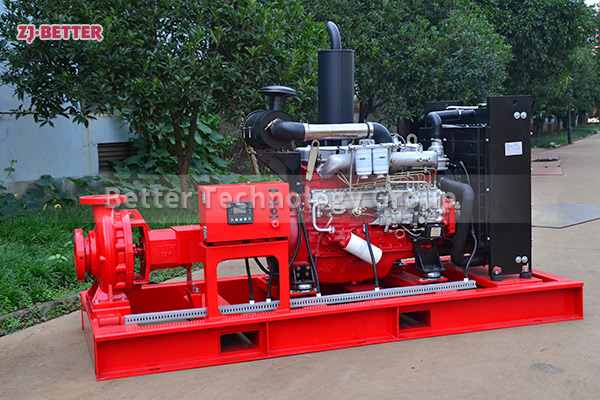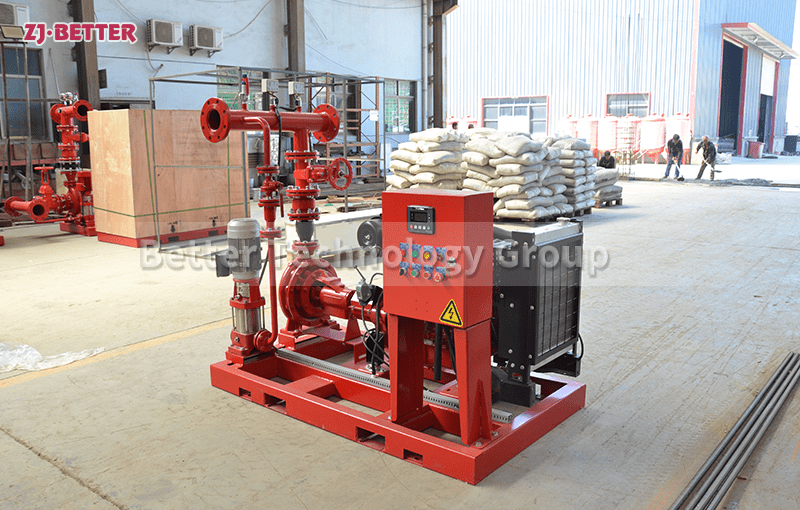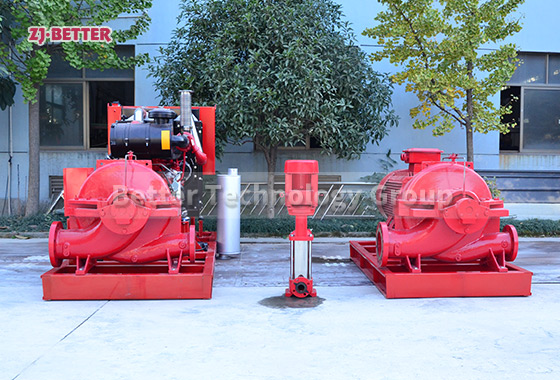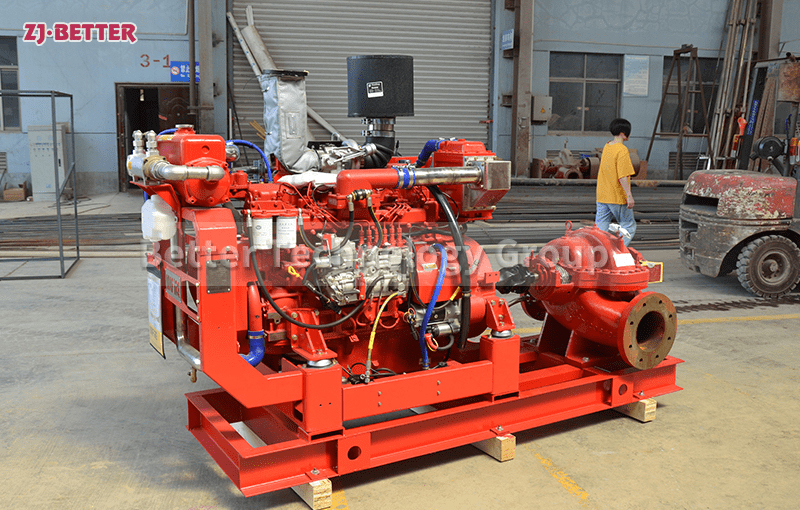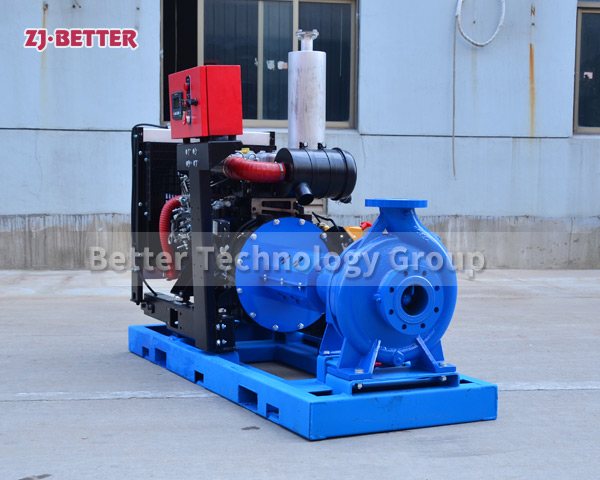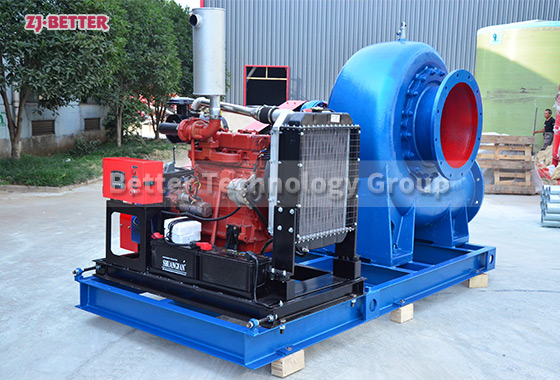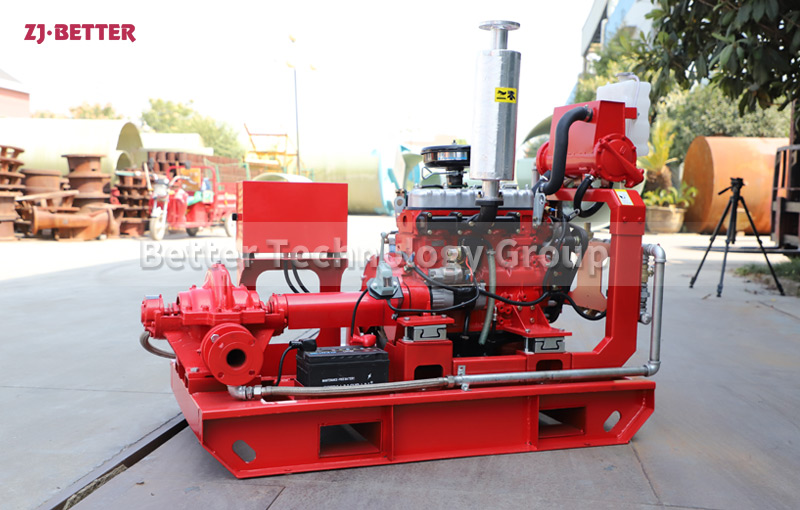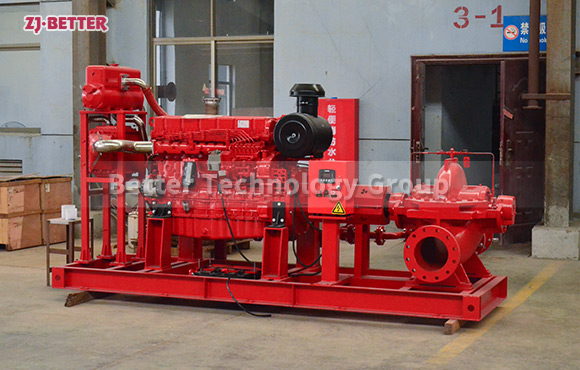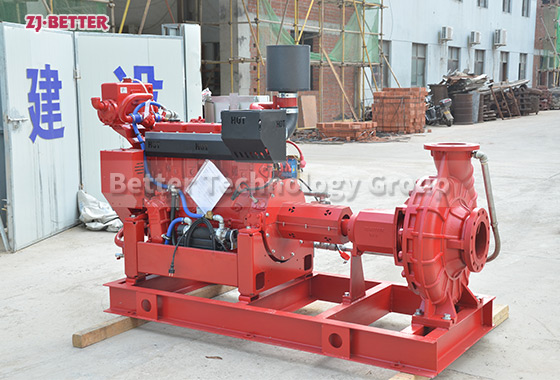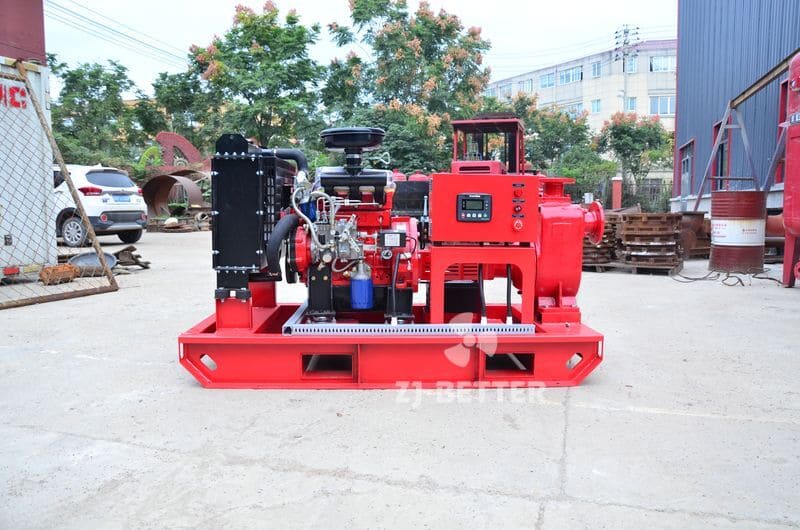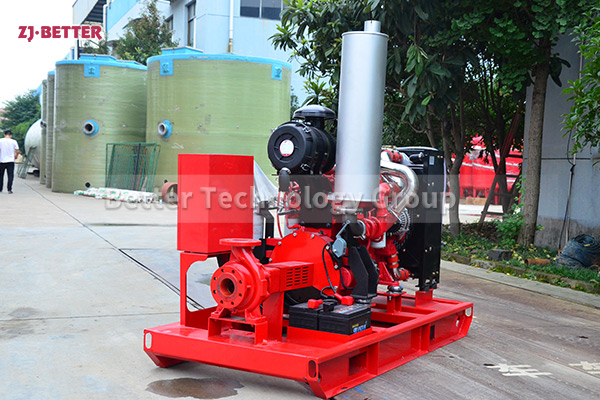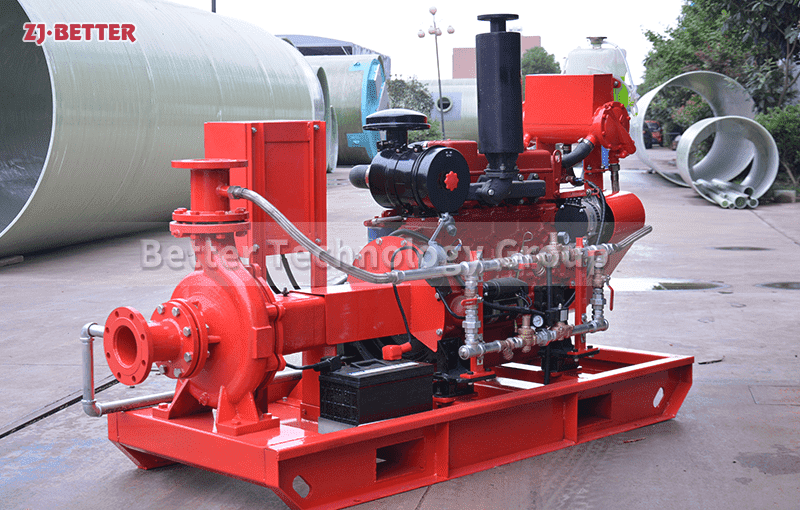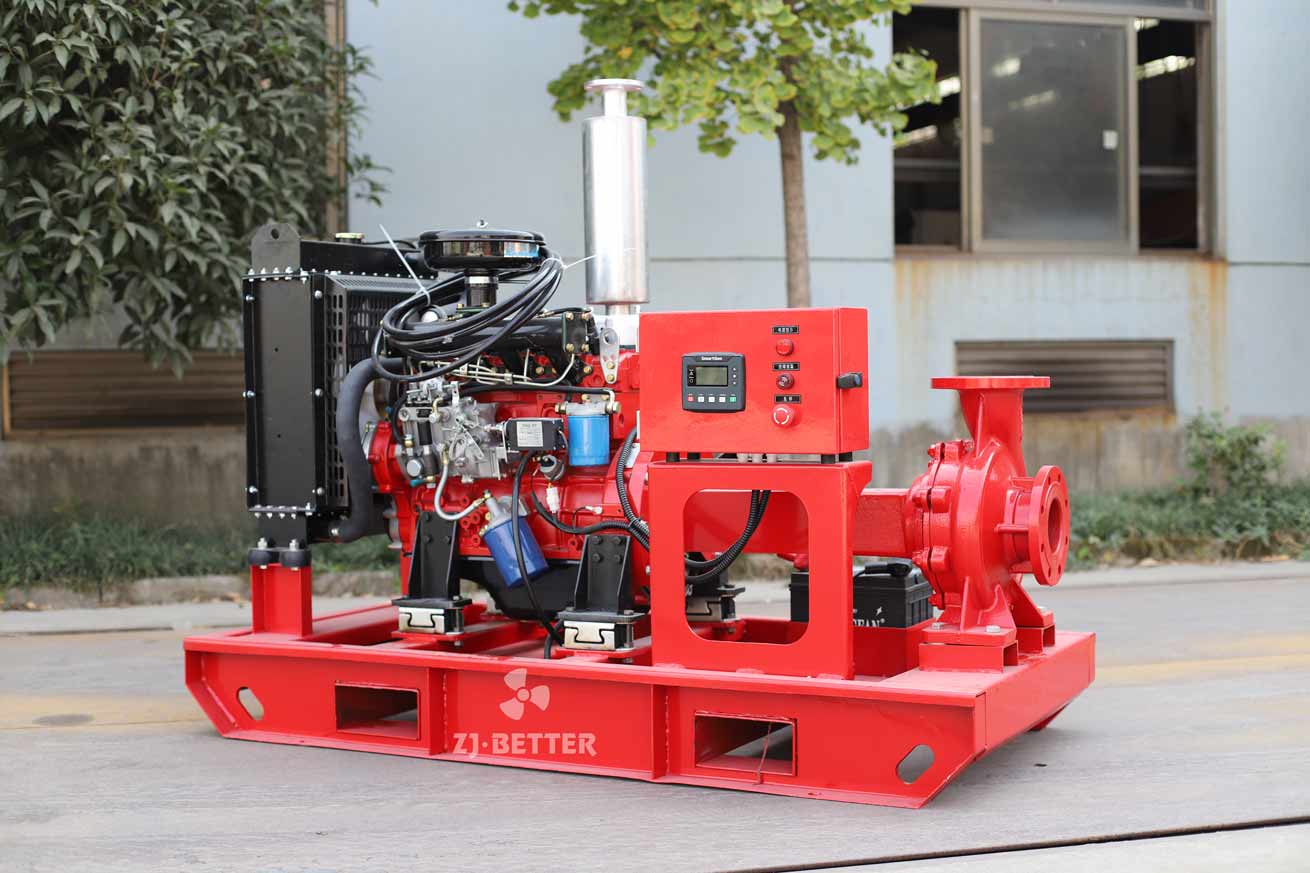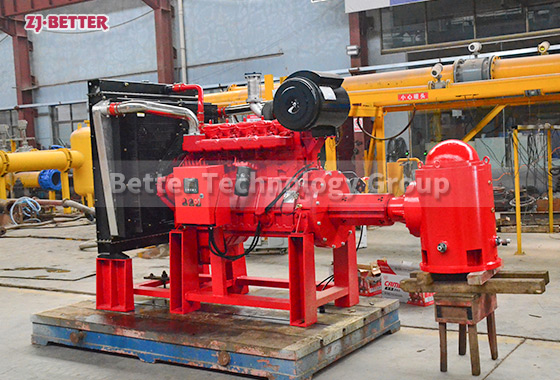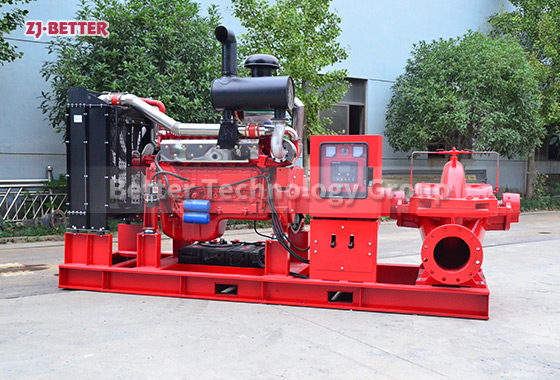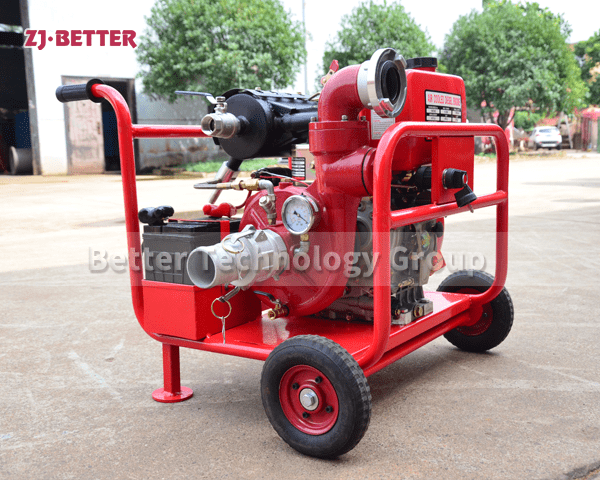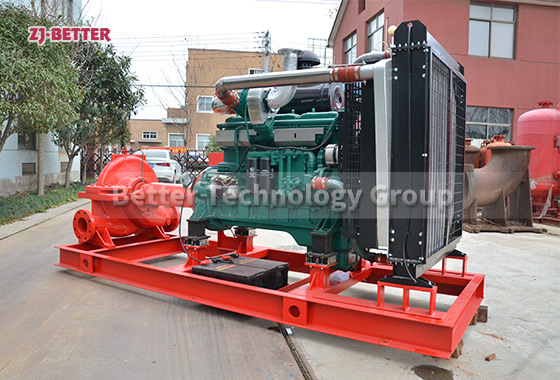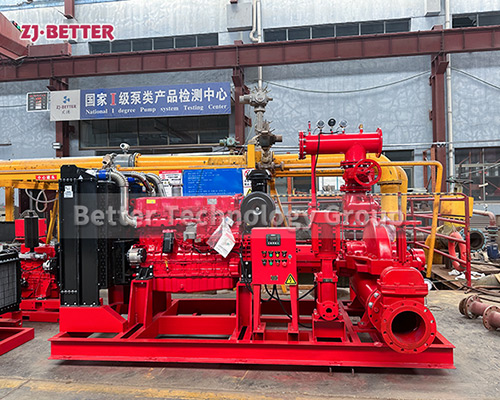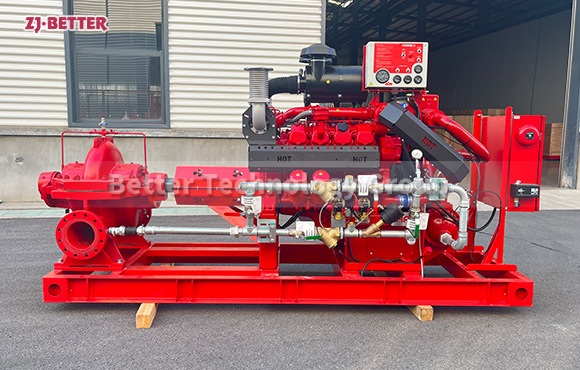OTS Diesel Fire Pump
Diesel engine fire pump, as a fixed fire extinguishing equipment, has been widely used in fire diversion, especially in the case of no power supply or abnormal power supply and other emergencies, other diesel engines can also be equipped as power engines according to the needs of users.
After receiving the fire/pipe network pressure/power failure/other start signals, the diesel engine fire pump can automatically start and enter full load operation within 5 seconds. The battery can be automatically charged by the main power supply or the diesel charging motor to ensure the smooth start of the equipment; automatic alarm protection for low oil pressure, high water temperature and other faults of the diesel engine, overspeed alarm and shutdown; the diesel engine fire pump is in a hot engine standby state to ensure emergency work. The diesel engine fire pump adopts the direct connection technology between the diesel engine and the water pump. Through the elastic coupling, the failure points are reduced, the start-up time of the unit is greatly shortened, and the reliability and emergency performance of the unit are improved.

